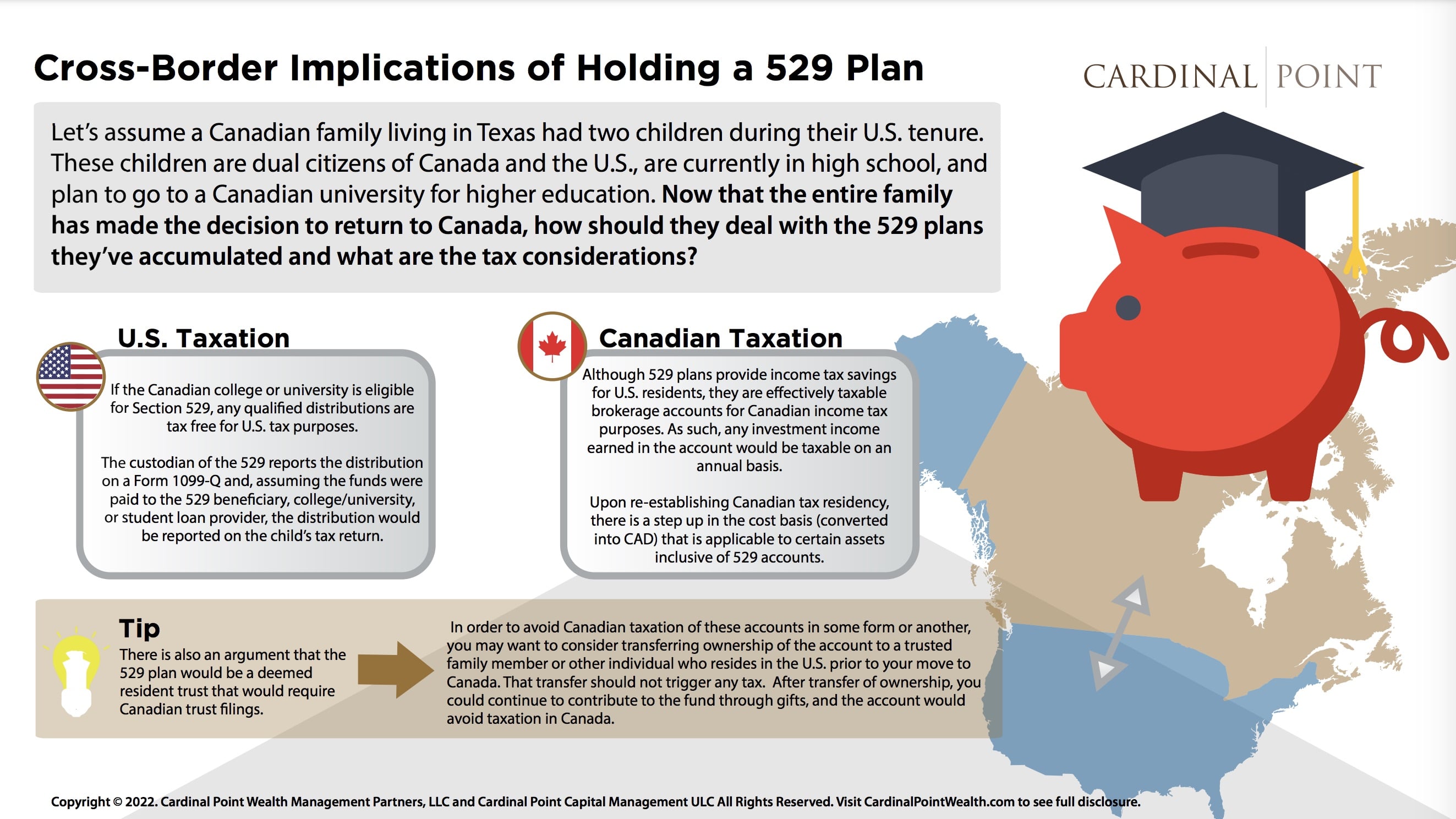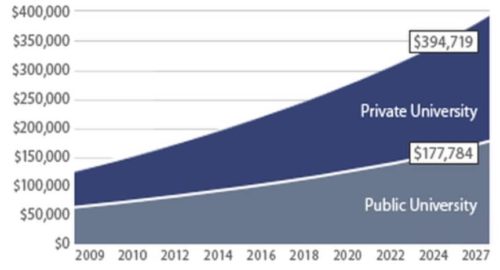Are you concerned about over-funding your child’s 529 plan?
There are many potential scenarios that raise important questions. One of the most compelling is, “What if you over-contribute to a 529 plan?”
The good news is that there is new legislation that can help to alleviate concerns about that, and help you preserve more tax-free wealth. That’s the focus of this insightful blog.

Options for 529 Plan Residuals
Although funds in a 529 plan utilized for qualified expenses are withdrawn tax-free, non-qualified expenses do not offer that same luxury. This situation occurs when a child completes their higher education, but funds remain in the 529 plan. In this scenario there have traditionally been two main options:
- Change the beneficiary of the 529 plan to an eligible relative – a spouse, in-laws, children, siblings, nieces/nephews, aunts/uncles, or first cousins. .
- Remove the remaining assets in the 529 plan and pay ordinary income tax plus a 10% penalty on the earnings within the account – taxable to the beneficiary of the 529 plan.
New laws going into effect in 2024 provide a third option:
- Unused funds within a 529 plan can now be rolled over to a Roth IRA in the name of the beneficiary, if certain criteria are met.
The New Legislation
In December of 2022, the SECURE Act 2.0 was signed into law, allowing U.S. taxpayers additional methods of enhancing their retirement planning endeavors. One option in the SECURE Act 2.0, effective in 2024, provides the latitude to transfer unused 529 funds directly into the beneficiary’s Roth IRA, tax-free.
Eligibility & Boundaries
To do so, specific criteria must be met, and the most common are:
- Funds must be moved from the 529 to a Roth IRA for the 529 beneficiary, not the parent or account holder.
- The 529 beneficiary must have available Roth IRA contribution room – the limit is $6,500 (2023) for a beneficiary younger than 50 years of age. For example, if $26,000 remained in the 529 account, it would take 4 years (at current contribution limits of $6,500) to transfer all of those remaining 529 funds.
- There is also a lifetime maximum transfer of $35,000 from a 529 plan account to a Roth IRA.
- Roth IRA income limits will not apply. However, the 529 beneficiary can only contribute as much as their earned income, or the maximum annual Roth IRA contributory maximum, whichever amount is less.
- The 529 plan must have been created and maintained for a minimum of 15 years in order to be eligible for the transfer.
Benefits
Whether the child remains in the U.S., relocates to Canada, or lives a cross-border lifestyle, there are many benefits in leveraging this new legislation.
- Assuming that certain basic requirements are met, Roth IRAs are highly advantageous, given their tax-free growth and tax-free distribution status. When your child is able to maximize their Roth IRA contributions right after graduation, that essentially turbocharges their retirement planning.
- It allows the 529 beneficiary to avoid income taxes and the 10% penalty on otherwise non-qualified 529 distributions.
- Per the Canada/U.S. Tax Treaty, the tax-free status of the Roth IRA is recognized not only in the U.S. but also in Canada – as long as certain elections are made on the Canadian entry return and no Roth IRA contributions are made after establishing Canadian tax residency. With higher tax rates in Canada, the Roth IRA can be a powerful tax management tool.
-
- Note that if the 529 beneficiary is a Canadian tax resident, this new opportunity to transfer unused 529 funds directly into the beneficiary’s Roth IRA should not be undertaken. Tread carefully, and speak to a cross-border financial advisor.
From the account owner’s (parent, grandparent, etc.) perspective, there is leeway when estimating how much will be needed to fund tuition. They are reassured that even if they budget more than necessary, they now have a way to avoid taxes and penalties on their 529 earnings.
Tax Implications
There are still some unknowns to be aware of, since the SECURE Act 2.0 is still relatively new and changes to the 529 plan have not yet been enacted. For example, many states allow for a tax deduction (within limits) of 529 contributions on the state tax return. But the IRS does not allow a federal tax deduction on contributions. (See further details in our publication Cross-Border Implications of Holding a 529 Plan.) At this time, we also don’t know whether or not states will follow the IRS and allow for tax-free transfer of 529 residuals into the beneficiary’s Roth IRA. Given this uncertainty, it may be unclear how custodians of 529 plans will report the transfer. In a typical non-qualified withdrawal scenario, the 1099-Q reports the total distribution in Box 1, earnings in Box 2, and original contributions (basis) in Box 3. But if the state rules don’t align with the Federal laws, that may result in tax reporting issues or complications.
Conclusion
This new tax law legislation, as it relates to 529 plans, is welcomed and helps to alleviate concerns related to the “what-if” question introduced at the beginning of this article. The legislation further enhances the tax-efficient accumulation of wealth for those young adults starting their careers at a time in life when their cash flow is likely tight. From a cross-border perspective, Canadian taxes are higher than in the U.S., so the strategic use of a 529 transfer into a Roth IRA provides an additional benefit. As a Canadian or a U.S. resident, 529 plans are a great tax-efficient tool to accumulate funds for higher education.
The contents of this article are high-level in nature and your individual circumstances will vary. Feel free to speak with Cardinal Point, a cross-border investment and wealth advisor, regarding your unique scenario. Also bear in mind that within the cross-border wealth management sphere, strategies for college funding via a Section 529 plan are in constant flux. A breakdown surrounding the mechanics and logistics of a 529 Plan can be found in our e-book: Cross-Border Implications of Holding a 529 Plan.

